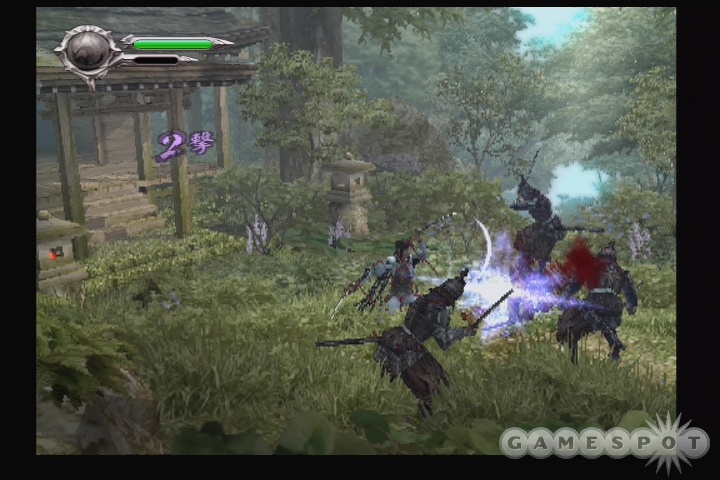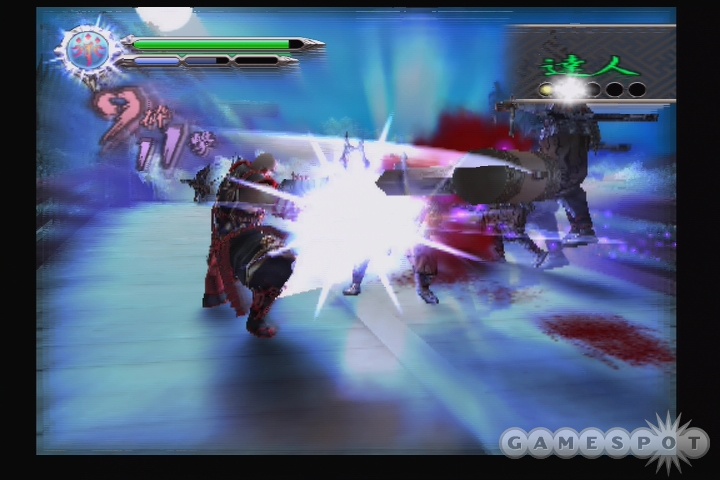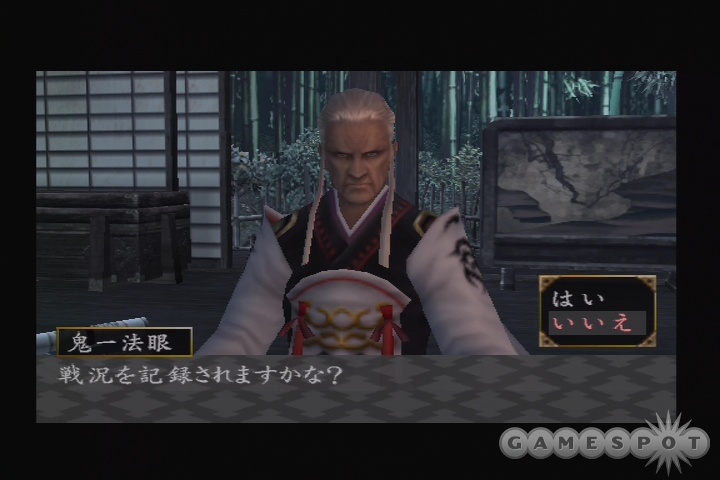Genji: Dawn of the Samurai Import Hands-On
We clash swords with the just-released import version of this graphically stunning PS2 action adventure set in ancient Japan.
We eagerly busted the shrink-wrap on our brand-new import copy of Genji: Dawn of the Samurai, the first product from Game Republic, a company founded by legendary Capcom alum Yoshiki Okamoto (best known for Street Fighter II). We've seen Genji before, at the Tokyo Game Show and then again at the Electronic Entertainment Expo, and all along it's been looking like a visually impressive hack-and-slash action adventure. However, now that we've had a chance to play the finished Japanese version of the game, we've also noted that there seems to be a good amount of underlying depth and intricate storytelling to go with all the spectacular swordplay. Genji's headed to these shores later this year, and now we have a much better sense of what to expect from the game.
Set in 12th-century Japan, Genji is based on an ancient Japanese novel, though you wouldn't know it from taking a look at the stylized, anime-inspired artwork in the game. You begin the adventure as Yoshitsune, a young but talented swordsman caught up in a turbulent time. Later, Yoshitsune teams up with a massive warrior named Benkei, whose slow but immensely powerful strikes make a good counterpart to Yoshitsune's graceful martial arts.
Fans of Capcom's Onimusha series will be in familiar territory in Genji, which offers a similar blend of action and adventure elements. Early on in the game, there's a lot of story that gets unraveled, in addition to numerous action sequences. There's an underlying role-playing system as well, since Yoshitsune and Benkei will get to speak with various other characters and gain experience levels as they fight, and you may also upgrade their weapons, armor, and abilities as you proceed.
Yoshitsune and Benkei are the original odd couple. Sure enough, when Yoshitsune first meets up with the big lug and his gigantic club, they get into a brawl--this is the first fairly tough boss fight of the game, because Benkei (and his wild, unblockable attacks) is no joke. Once you show him who's boss, though, Benkei swears fealty to his young master, and then you're able to switch between playing primarily as one character or the other. However, some sequences feature both characters, so you'll alternate between controlling both heroes as they fight their own separate battles. Genji is a single-player game, though, so don't go thinking about two-player co-op. They've got to save something special for the sequel, right?

The action has a fast, fluid feel to it. Yoshitsune and Benkei will be taking on plenty of wicked-looking swordsmen, as well as gangly monks, big and imposing warlords, and some heinous monstrosities to boot. The animations during combat are particularly noteworthy, as both Yoshitsune and Benkei move about realistically even as you force them to rapidly shift direction. Unlike typical game characters that can be made to awkwardly spin around at your whim, these guys realistically sidestep and change their facing in concert with your actions. Combat primarily involves hammering on the square button, causing you to unleash successive strikes. Again, the attack button in combination with the left analog stick will result in intuitive reactions from your in-game persona, such as lateral slashes or reverse kicks. It's very easy to pick up and start playing Genji.
The action isn't just about button mashing, though. You can defend against enemy attacks, but only for a while before your guard is broken and you're left temporarily vulnerable. Your enemies are governed by the same rules, though, and in what's perhaps a nod to Okamoto's Street Fighter roots, if you whale on an opponent and don't let up, that opponent might well become dizzy and immobilized, opening himself up to even more punishment. The action pauses slightly and dramatically as your hits connect, lending a sense of weight to your every move and making the combat feel that much more impactful. The controls are responsive, and the fighting certainly looks good, especially since it all moves at a silky-smooth frame rate.
The Mind's Eye
Yoshitsune learns a potent trick early in his adventure: He can channel his martial energy in such a way that it causes his foes to be caught off guard, even as his senses grow so acute that everything around him seems to slow down. This recharging ability may be triggered using the L1 button, during which time a square button icon will flash onscreen when you're about to be attacked. If you press the button at this instant, you'll counterattack, cutting straight through the enemy's offense and bringing him down instantly.

Meanwhile, Benkei is capable of swatting down half a dozen foes in one fell swoop using this powerful technique. The timing of these counterblows really isn't very difficult, so if you've mastered Onimusha's issen techniques, you'll have no problem picking up on Genji's equivalent. These are some flashy-looking moves that help instill the game's action sequences with some variety as well as some added flair.
Genji's literary inspiration is evident through its numerous plot sequences, which include lavishly produced prerendered cinematic cutscenes as well as in-engine 3D cutscenes (which, as nice as they look, unfortunately cannot be skipped). The quality of the visuals is high enough to where the in-engine cutscenes honestly look comparably as good as the prerendered stuff--the characters' faces are fully animated, and their lips sync up well to their speech, for example.
Of course, the Japanese version of the game is all in Japanese and features Japanese voice-over for all the cutscenes (some of the in-game dialogue is just text). We're pleased to report that the voice work seems to be of a consistently good quality, with performances pretty much along the lines of what you'd expect to hear out of a quality import anime. Sony reps have told us that the North American version of the game will be presented with its original Japanese dialogue, subtitled in English, and now that we've seen how much dialogue is in the game, we have a better understanding of why that is.
The adventure role-playing aspects of Genji extend beyond earning experience and shopping for new weapons and armor, because you'll also get to travel across an overworld map to key regions in the game. At first, these transitions are completely linear, but we can see already that the game is going to open up to a certain extent. Scenes also look different depending on when you visit them during the game--atmospheric lighting and other changes to the environments help make the scenery seem alive.

On first impression, Genji: Dawn of the Samurai seems to offer a great blend of action and adventure elements together with a high-quality presentation. It clearly takes some artistic liberties with its source material, but it delivers a tale of ancient Japan with aplomb. At this point, we're curious to see how much more challenging the game gets, and how long it is, but we've definitely enjoyed what we've played so far. Incidentally, if you can't wait for Genji to hit these shores this fall, the game is fairly import-friendly (and beautifully packaged, with a full-color manual and shiny gold disc), though you'll need to be able to navigate through some basic shopping and interface menus in Japanese. Stay tuned for more about Genji: Dawn of the Samurai, especially as we gain further insight into how the domestic version will differ from what we're playing.
Got a news tip or want to contact us directly? Email news@gamespot.com
Join the conversation